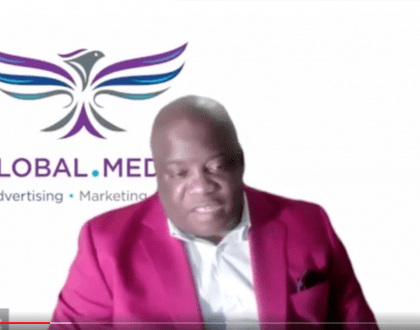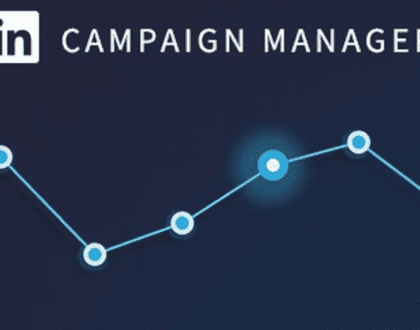The Ultimate Colour Guide for Content Marketing – repost
by EnyOsung
It’s not what you write, it’s how you right it and how it looks – this is the key to great content marketing!
This is a full repost of a great guide by Julie Neidlinger on the Coschedule.com blog. We loved it so much we shared it on social media and just had to bring it to you on this blog too. The guide does a brilliant job of making a complex subject (colour theory and psychology of colour) easy to understand and apply to benefit your business’ content marketing, web design, etc.
I want to emphasise that this blog post was not written especially for this blog because we do not have a relationship with Julie or Coschedule.com at all. It is simply a brilliant resource that we curated from our research on the web.
Grab yourself a hot cup of coffee, stop the clock and immerse yourself in an experience you definitely won’t regret.
Let’s begin the journey!
For content marketing, color is a cue.
As an artist, it pains me to reduce the magic and complexity of color to a four-sentence statement. But for content marketers, that’s what it is. In an ocean of content marketing, color can help yours stand out.
Color is a cue that gets your audience to see what you want them to see, feel what you want them to feel, and to do what you want them to do. How you use color also affects the usability–whether they can read it or not–of your content.
Color can change your message. Choose poor color choices, and your great content and your amazing call to action (CTA) are ignored. Even NASA is concerned about color, enough so that they’ve made online tools to help us pick optimal color combinations!
Understanding Color Theory
The Psychology Of Color In Marketing
- The Meanings of Color
- Gender Preferences in Color
- Color and Content Conversion
- Testing Your Best Colors

Colour guide poster visit website to download free
The Basics Of Color Theory
Understanding how color works isn’t just for artists dipping their hands into paint and pigments all day long. Anyone using content marketing needs to understand the basics of Color Theory, because you are using color in your content.
Primary Color
Primary colors are the three colors we need to make all other colors. They are red, blue, and yellow. These three colors can be used to create the next level of colors, called the secondary colors.
Exceptions, of course, abound when it comes to talking about primary colors. If you’re talking color theory in regards to light, your primary colors would be cyan, magenta, and yellow. Let’s not forget CMYK for print and RGB for screens/monitors. And, when mixing paint, it matters what particular pigment you’re using to get that red in order to come up with the proper new color. But let’s keep this simple and stick with red, blue, and yellow.
Secondary Color
Secondary colors are purple, green, and orange. They are created using the primary colors. If you look on the color wheel, you’ll find the secondary colors in between two primary colors.
- red + blue = purple
- blue + yellow = green
- red + yellow = orange
Tertiary Color
Tertiary colors are taking secondary colors one step further. They are the “two-name” colors, such as red-purple, red-orange, yellow-green, etc. They are created by adding more of one primary color than the other, creating not a true secondary color but instead, one that is found closer to the primary color.
Pure Color
Primary, secondary, and tertiary colors, without the addition of white, black, or a third color, are pure (or saturated) colors. They are intense, bright, cheery, and untainted colors. These are the colors of children’s toys, daycare decor, and summer clothes.
Tints
When white is added to a pure color, you create a tint. Some people refer to these as pastel colors. They are lighter and paler than a pure color, and not so intense. Tints range from slightly whiter to almost-white.
Shades
When black is added to a pure color, you create a shade. These darken and dull the brightness of pure colors, and range from slightly darker to almost black.
Tones
When gray (black + white) is added to a pure color, you create a tone. You often hear people saying that a color needs to be “toned down”, meaning it’s too intense and they want to drop the level of intensity. Adding black and white in different amounts to a color subdues the intensity quickly.
The Completed Color Wheel
Whew! So there we have it: a complete color wheel with primary, secondary, and tertiary colors, plus their tints, shades, and tones. You can see how it all fits together on the color wheel below.
On the left side of the wheel, in the blues and greens, you have cool colors. On the right side of the wheel, in the yellows and reds, you have warm colors.
Now that you understand color theory and the color wheel, you can start to use color purposefully in your content marketing
Using Contrast And Color
When it comes to color techniques, the use of contrast is particularly important, and it is probably the one that will lead you to butt heads with your designer the most.
Contrast is how one color stands apart from another. It’s what makes text or objects distinguishable from the background. High contrast is when colors easily stand apart from each other. Low contrast is when they don’t.
Often, people assume a difference in color is what creates contrast, but that is not true. You might have two colors that are different, but they have no contrast. Their tone is the same.
Colors, in their pure form, have inherent differences in how light and dark they are.
Yellow is bright, for example, while blue is darker. Red and orange have little contrast with each other, despite being different colors. When different colors have the same tone (level of gray), they will not have much, either. It isn’t enough to simply pick two different colors when making decisions about contrast.
Using High And Low Contrast
Generally, high contrast is the best choice for important content, because it is most easily seen. Dark on light or light on dark–it’s the easiest to read. It might not be exciting, but it isreadable. One word of caution, though: if everything is high contrast, nothing stands out and it’s tiring on the eye after a while. (e.g. think of black computer screens with bright green text)
Designers often prefer low contrast techniques. They like to make things look beautiful, but beautiful isn’t always the best for readability. Tone-on-tone similar-color combinations are very popular and while their subtlety is quite attractive, they are also difficult for people to read.
If you decide to use low contrast, be sure it is for content that isn’t important. Chances are it won’t get read, or get read first. Low contrast is a fine way to push the less important content back, while high contrast is how you can draw attention.
Choose color and contrast that is readable. Beautiful content that can’t be read is a fail (Click to tweet)
Choosing Color Combinations
The color wheel can help you choose great color combinations for your your call to action button, your infographics, or your lead collection pop-up.
Keeping your color combinations simple will help you in the long run. A University of Toronto study on how people used Adobe Kuler revealed that most people preferred simple color combinations that relied on only 2 to 3 favorite colors.
People like simplicity; it makes your content easier to understand if they don’t have to interpret it through many colors. Remember, color has meaning, too. It adds to your message. Too many colors make for a confusing message. So how do you choose those 2 or 3 colors? The color wheel can help.
Using Complementary (Opposite) Colors
Complementary color combinations make things stand out.
Complementary colors are “opposite” colors. They are opposite of each other on the color wheel, meaning the one color they lack is that one opposite of them. They are geographically and color-wise the opposite. They provide a kind of visual tension because they are so opposed to each other.
Blue is the opposite of orange.
Red is the opposite of green.
Yellow is the opposite of purple.
Opposites attract! When the human eye sees a painting full of different kinds of greens, any bit of red is going to stand out amazingly well. Why?
Red is the opposite color of green. When the eye has been looking at a lot of the same color, it wants to see the opposite. Using complementary colors is the easiest way to get something to stand out, but you have to use them carefully to keep your content from being visually jarring. You don’t want 50% orange and 50% blue, for example, because neither color wins and it makes eyes hurt.
Let’s look at the CoSchedule homepage as an example. What colors do you see?
It’s mainly orange, but our most important button, the “Try It Free” button, is blue. Blue is the opposite color of orange. In a sea of orange, your eye is going to notice blue faster than any other color. We also used low contrast dark orange on light orange to help make that blue button stand out even more.
If you want to use three colors instead of just two, using split complementary color schemes is a way to capitalize on the power of complementary colors but add a third color to your palette. To use it, you’ll choose one color as your base color, and then the two colors adjacent to its opposite.
A split complementary color scheme doesn’t have quite the same level of tension that a complementary color scheme does, but it’s still visually exciting for your eye.
A word of caution about accessibility: red and green, two complementary colors, present a sticky problem. Some people are color-blind and cannot distinguish between certain colors, and red and green are a common problematic combination. Colors with heavy amounts of red and green in them get bungled up, too. Did you know that Facebook is blue becauseMark Zuckerberg is red-green colorblind? He sees blues the best.
Designing for color blindness, from the “Understanding Graphics” Blog.
If you use complementary colors in text or important information, there must be high contrast. Try to never use a color solely as the information source. Include text in graphs and infographics when possible. Your designer may love the aesthetics of subtle and low contrast and want to argue about color combinations and too much text, but remember that the main thing is that your content be readable by everyone.
Using Analogous Colors
Analogous colors sit next to each other on the color wheel. They are “related”, a kind of family of colors that creates pleasing and relaxed visuals. They aren’t jarring, opposite, or clashing. They also don’t stand out from one another. Analogous colors can create subtle and beautiful content, but you may need to use a complementary color to get any particular item to stand out.
Using Monochromatic Colors
Monochromatic colors are a single color, and its tints, shades, and tones. They are even more soft and subtle than analogous, being a color palette based on one single color. Monochromatic colors work great when paired with a single complementary color. On the CoSchedule website, we use monochromatic orange colors with blue for the content we want noticed.
Most designers, when using complementary colors, pair a rich collection of monochromatic colors with a single complementary color.
Using Triangle, Rectangle And Square Colors
Creating color combinations that stretch the boundaries of the easy power of complementary opposites and the related analogous and monochromatic palettes isn’t difficult. All you need is a triangle, rectangle, and a square.
A triangle (triad) is a color combination made of three colors that are evenly spaced around the color wheel.
A rectangle (tetradic) is a color combination made of four colors that are made up of two complementary pairs.
A square is similar to a rectangle palette, but the two sets of complementary pairs are colors evenly spaced around the circle.
These three combinations can be visually noisy if you’re not careful. The best application is to use one color as the dominant color, and the others for highlighting content. The triangle combination is particularly vibrant; three is a “stable” number and using three colors is visually stabilizing.
The Psychology Of Color In Marketing
Color has an impact on how we think and behave. Color directs our eye where to look, what to do, and how to interpret something. It puts content into context. It helps us decide what is important and what is not. That’s precisely why, as a content marketer, you need to understand what colors do to people.
The psychological impact of color is subjective. We don’t all react the same way to colors. There are a few generalities about how people respond to color and that’s what we’re going to look at.
Color Has Emotional And Cultural Meanings
How we interpret the emotional value of color depends upon our language, senses, and personality characteristics, making it difficult to predict reaction to color across a large audience of unique people.
Specific Color Influences
There are a few generalized understandings of what specific colors often mean to a large cross-section of people, with each color having negative and positive emotions associated with it.
In a survey, people were asked to choose the color they associated with particular words.
- Trust: Most chose the color blue (34%), followed by white (21%) and green (11%)
- Security: Blue came out on top (28%), followed by black (16%) and green (12%)
- Speed: Red was overwhelmingly the favorite (76%)
- Cheapness: Orange came first (26%), followed by yellow (22%) and brown (13%)
- High Quality: Black was the clear winner (43%), then blue (20%)
- High Tech: This was almost evenly split, with black the top choice (26%) and blue and gray second (both 23%)
- Reliability: Blue was the top choice (43%), followed by black (24%)
- Courage: Most chose purple (29%), then red (28%), and finally blue (22%)
- Fear/Terror: Red came in first (41%) followed by black (38%)
- Fun: Orange was the top choice (28%), followed closely by yellow (26%) and then purple (17%)
Blue is clearly a color people are positively drawn to, but beyond that, little else can be said.
Depending upon the context of the rest of your content, black can mean high quality and trust, or it can mean fear and terror. It can’t do it on its own, but surrounded by your content, a color choice can bump up your intended meaning a notch.
General Color Influences
Faber Birren, a 20th century color researcher and author of Color Psychology And Color Therapy, discovered something interesting about general color groups.
He found that bright light and bright colors promoted “big muscle” activity, while softer and deeper colors promoted mental and visual tasks better. He also discovered that red stimulates our nervous system while blue relaxes it. Red and related colors also caused people to overestimate the passage of time, while cooler colors like green and blue were the reverse. In other words:
- Bright colors promote physical activity, but make the passage of time seem slower.
- Cooler and softer colors are better for mental activity, and make the time seem to fly by.
Cultural Color Meanings
Color also means different things in different cultures. According to researcher Joe Hallock“Eskimos use 17 words for white as applied to different snow conditions, where in the Northwest United States there are only 4 or 5.”
Every culture understands a color differently. It has a role to play in religion, politics, ceremony, and art. The culture your audience is in affects how they understand deeper meanings of color. Even the context you use the color in affects the meaning of color. For example, in India, red means purity, while in the U.S. it denotes passion and specific holidays.
Back To Top
Men And Women Experience Color Differently
Compiling the results of many studies, the Kissmetrics blog came up with an excellent infographic on how men and women experience and react to color differently. Men and women have different color preferences.
According to both the Kissmetrics blog and Hallock:
- Blue is the favored color by both men (57%) and women (35%), though it is more heavily favored by men.
- Men dislike brown the most, while women dislike orange the most.
- Colors that were disliked were also seen as “cheap.”
- Men tolerate achromatic colors (i.e. shades of gray) better.
- Women preferred tints while men preferred pure or shaded colors.
- A majority of men (56%) and women (76%) preferred cool colors in general.
- Orange and yellow grow increasingly disliked as both genders get older.
Women see more colors than men, generally. They are more aware of slight color differences within a color range.
This may explain why men simply call the color blue…blue. Women, on the other hand, see cerulean, pthalo, sky, teal, turquoise, and all sorts of varieties of blue. Perhaps it is a combination of being able to visually see more differentiation and considering it worthy of a more specific name. Perhaps men are better able to tolerate both colorless and bright color palettes because they aren’t as sensitive to the nature and nuances of the color as women seem to be.
What does this mean for you?
Well, is your audience mostly men or is it women? What age are they? Do the colors you’re using in your content marketing attract or repel that audience? If your audience is women, in particular, you must carefully choose colors that are not too raucous. If you are selling a luxury product, you want to avoid colors that are seen as cheap.
Color Affects Conversions
How people behave when they see color has a direct effect on your conversions. Will they click the button on your CTA? Will they read your pop-up graphic? Will they notice your email subscription box?
According to the Institute for Color Research, people make a judgment about your content in 90 seconds or less. And, up to 90% of that judgment in that brief amount of time is influenced by the colors they see. Blogger Neil Patel gives further proof of how colors affect your conversion rate, revealing that 85% of consumers base buying decisions on color, and that full-color ads in magazines get recognized 26% more often than plain old black and white ads.
In fact, color helps people recognize your brand by up to 80%. It’s important to choose your color carefully, and stick with it.
When it comes to getting people to click a button or sign up, it’s not a question of which color is magic and makes it happen all the time. It’s a question of passive and active colors, of high and low contrasts, and of opposites, like our CoSchedule example where the blue button stood out from the orange.
And it’s a question of which color tested best for you.
The best color for conversions in your content is the one you’ve tested yourself. – Click to Tweet
Using Color In Marketing
All of this is well and good, but you need to test which colors work for your audience.
The color combination of orange and blue is a powerful one. It’s fairly safe in respects to color blindness, and repeatedly gets favorable marks by people as a combination.
But is it enough to just pick a great combination?
Not at all; you need to know how to use those colors individually. Let’s look at CoSchedule and our Facebook promotions as an example. We created two designs, one with a blue background, and one with an orange background.
The promotion with the orange background made people six times more likely to click than the blue background! It made sense, though. Think about Facebook. It is a predominantly blue network, and so our orange image stood out more than our blue image did.
This doesn’t mean that orange is the color you must use. It means we tested our two colors and found that orange worked the best for us. You must do your own testing. You need to find out if your red button beats your green button (as Hubspot discovered) on your own. The color of the rest of the page, your content, and the placement objects will make your results different from what someone else has discovered.
—
Color is a fascinating study, from both a theory and psychological standpoint.
From Newton, Goethe, Itten, Hering, Young-Helmholtz, Birren, or Müller (yes, there have been many theories on color throughout history), the lowly color wheel has been considered and reconsidered again and again. The effect color has on us and our behavior has been studied repeatedly.
When it comes to choosing colors, you must test. You cannot know how your audience will respond to your colors in your content and layout without creating thoughtful A/B tests to determine which color combinations and placements generate the most leads and traffic in your content.
What have you learned about color in your own content marketing? Have you had some interesting A/B test results?
Social Media + Editorial Calendar For Your Blog – Try it free by signing up
Congratulations on making it to the end of your fascinating journey into colour theory and use in content marketing. We Hope you have learnt a lot that you will use to make colour work in your content marketing, website, social media posts, etc.
Other posts you may like
Psychological Pricing Strategies Guide – 9 secrets to sell more
How to actually stop dangers to customers’ information
Making sure the price is right
–
Our Digital Marketing Services:
Search Engine Optimisation| Content Development & Marketing| Email Marketing| Pay-Per- Click| Social Media Marketing| App Development & Marketing
HOME | ABOUT | BLOG | TESTIMONIALS
**************************************************************************************************************************************************************************************
smallbiz-emarketing provides expert market research, marketing on all digital platforms and offline advertising consultancy specifically for small businesses and start-ups for whom money is tight. Checkout our Services page to see how our digital marketing services can help your business to get more customers and sell more, faster. Also checkout our Prices page to see our genuinely affordable digital marketing packages for small businesses and startups. Why not sign up for our newsletter using the simple form on the right? You can also follow us on social networks. Finally, we’d love for you to share this post with your network using the share buttons below.
**************************************************************************************************************************************************************************************
We love to get your comments and suggestions. Have you found a colour strategy that works really well for your business? Let us know what you think about this post and any colour challenges you have experienced in the comments section below.
Recommended Posts

Eny talks with Lydia on The Joyful Path Podcast
9th December 2022

How to use new LinkedIn Campaign Manager
20th July 2022



























